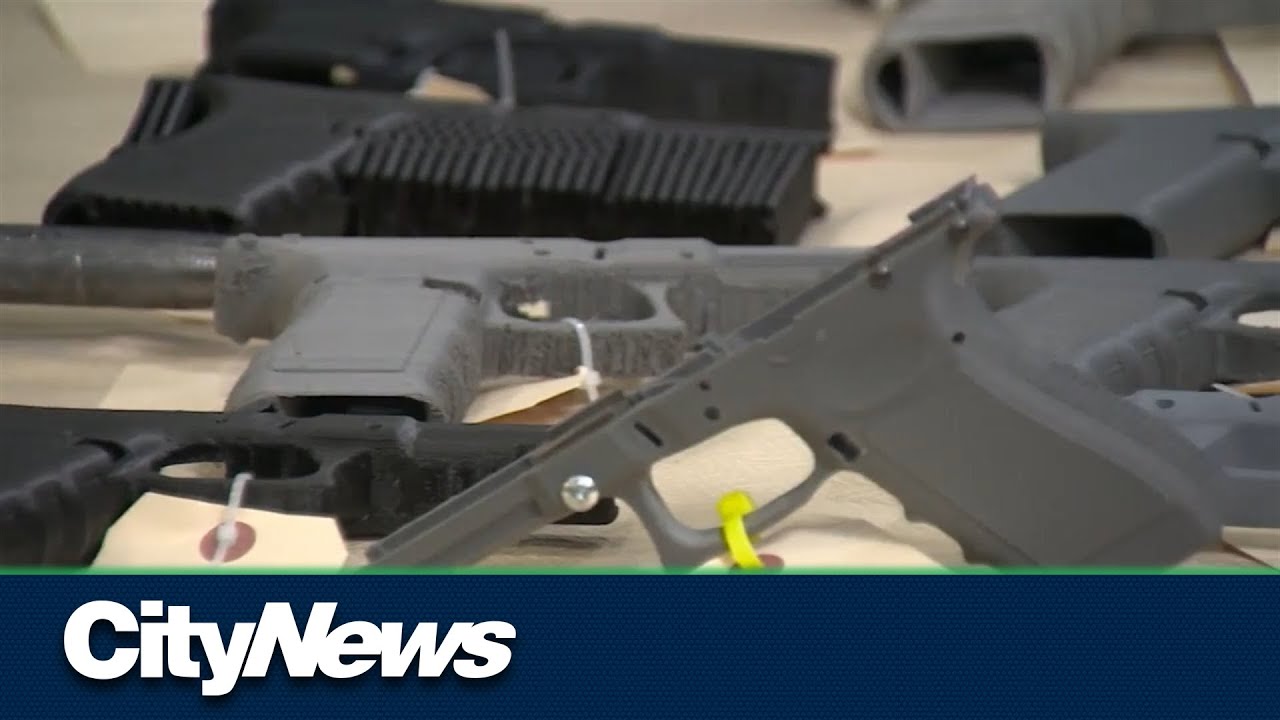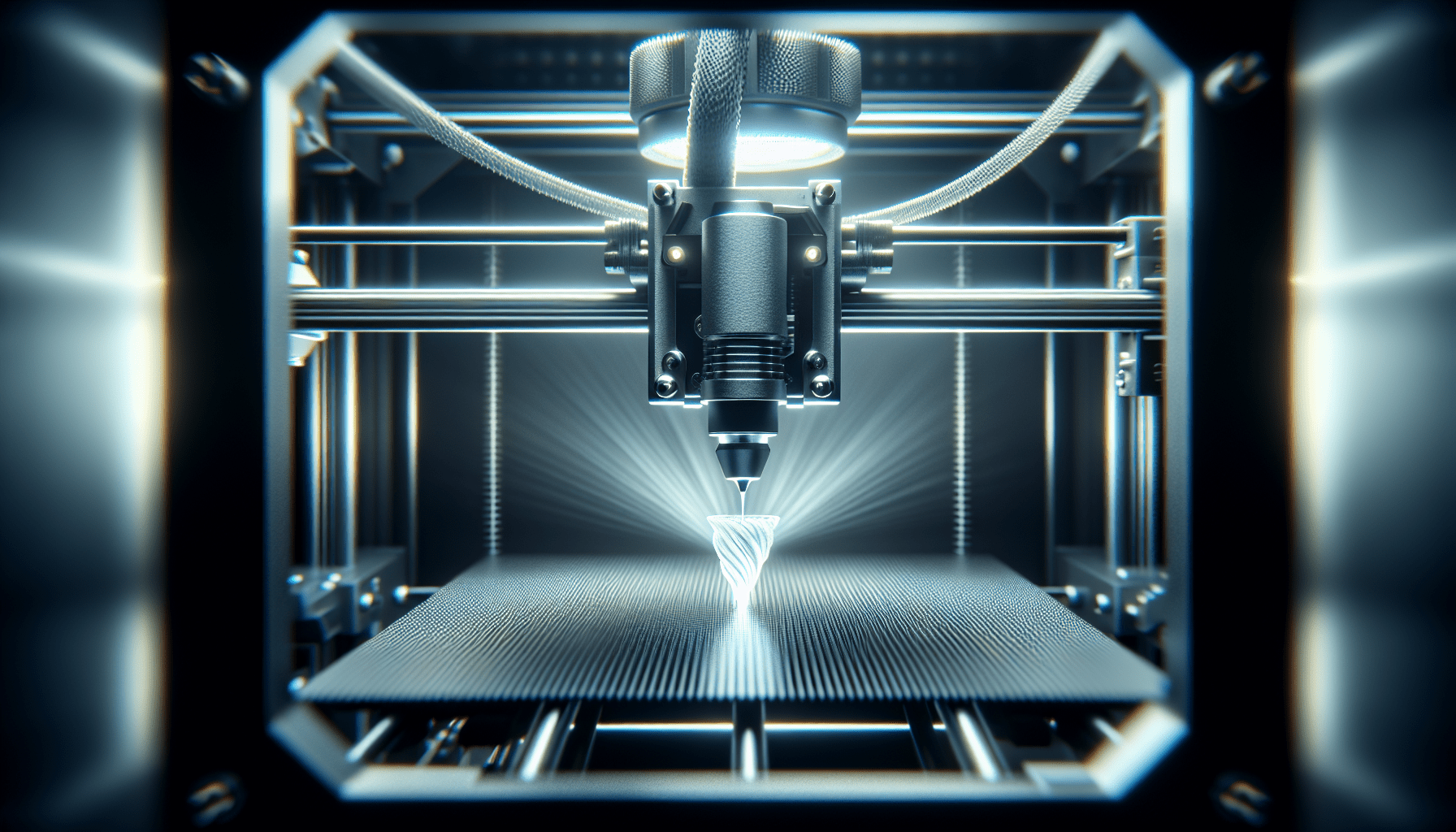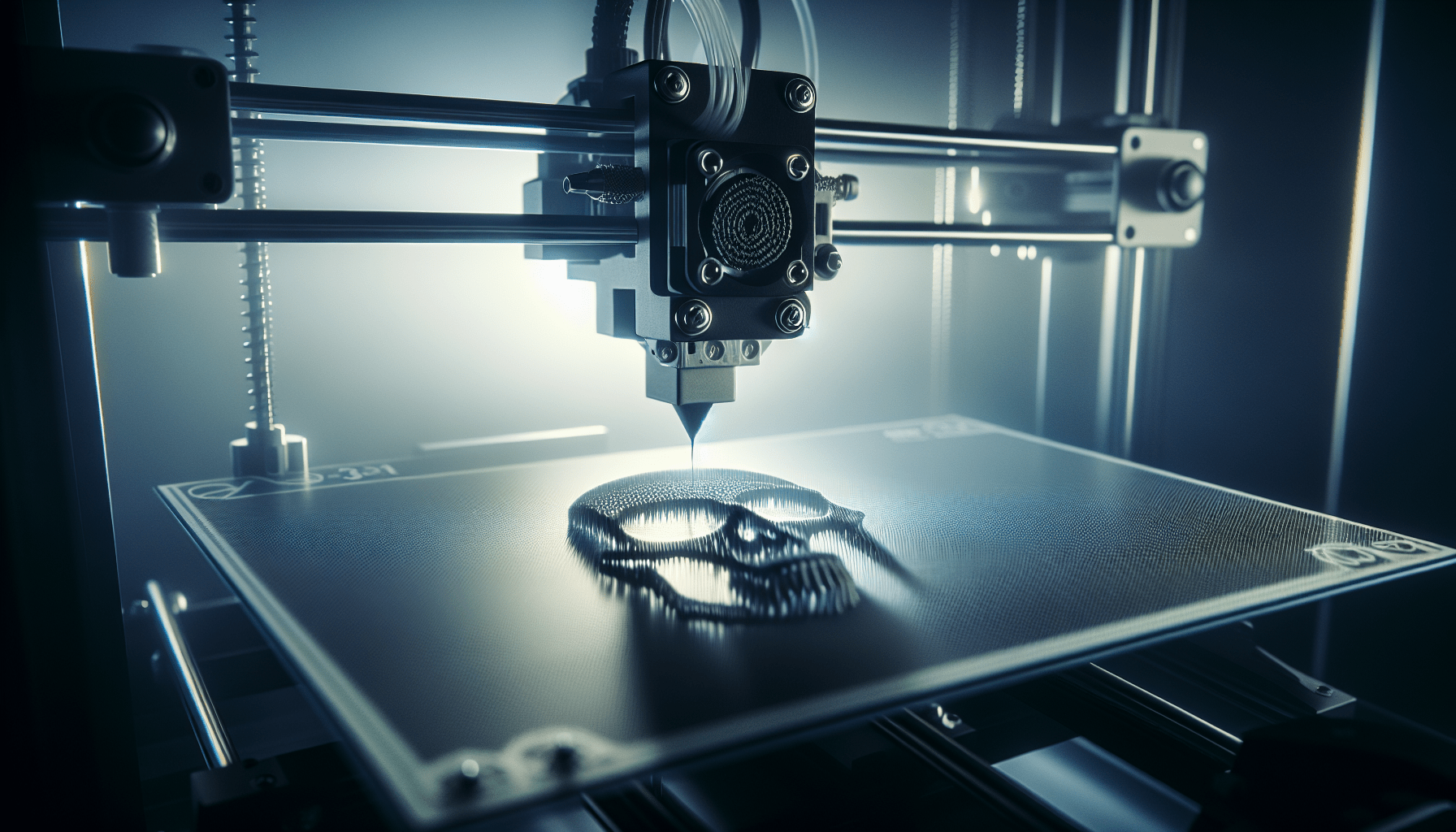ELEGOO Mercury Plus V3.0 Wash and Cure Station, 7.5 L Large Capacity, Compatible with Mars Saturn Photon Halot MSLA LCD DLP 3D Printers
$159.99 (as of June 18, 2025 23:32 GMT +00:00 - More infoProduct prices and availability are accurate as of the date/time indicated and are subject to change. Any price and availability information displayed on [relevant Amazon Site(s), as applicable] at the time of purchase will apply to the purchase of this product.)Edmonton authorities recently apprehended 29-year-old Roy Evan Tucker, accused of producing 3D printed guns at home. This groundbreaking case highlights the escalating issues surrounding 3D printed firearms. Tucker faces over 40 charges related to these homemade weapons as well as other illegally acquired firearms, raising concerns over the ease with which such guns can be manufactured.
The investigation was triggered by a tip from Quebec police, who discovered an individual importing key components for these weapons. This led to the stunning revelation of Tucker’s operation, where officers found 16 homemade guns, semi-automatic weapons, and even blueprints for further production. The rise in 3D printed firearms, combined with existing gaps in federal legislation, poses a new challenge for law enforcement in tackling this modern threat.
$30 off $400+ Anycubic Products with code AC30OFF
Overview of the Incident
Brief Description of the Arrest
In a significant breakthrough, Edmonton police have arrested 29-year-old Roy Evan Tucker on over 40 charges related to the manufacturing and possession of 3D printed guns. This arrest followed months of investigative work that initially began with a tip-off from Quebec authorities. Tucker was found to be producing these firearms using 3D printing technology, a practice that has been growing in frequency and sophistication.
Background on 3D Printing Technology
3D printing technology, also known as additive manufacturing, allows users to create three-dimensional objects from digital files by layering materials. Initially developed for rapid prototyping, this technology has advanced significantly, enabling the production of durable and complex items, including firearms. While 3D printing has vast potential benefits, it also poses unique challenges, particularly with regard to unregulated manufacturing capabilities.
Details of the Charges
Number and Nature of Charges
Roy Evan Tucker faces over 40 charges, a mix of offenses directly linked to the manufacturing and possession of 3D printed firearms and charges related to illegal possession of conventional firearms. The sheer number of charges underscores the severity of the case and the multiple violations of law that Tucker is alleged to have committed.
Specific Laws Violated
The charges against Tucker include manufacturing firearms without a license, possession of prohibited or restricted firearms, and trafficking in firearms. In Canada, the Firearms Act, Criminal Code, and other related statutes govern these crimes, prohibiting the unauthorized creation and distribution of firearms. Tucker’s activities directly contravened these laws, particularly those around unlicensed manufacturing and illegal distribution.

Buy Photon Mono M5 Get Free 1KG Resin
Investigative Discovery
Police Tip-Off
The investigation into Tucker began with a crucial tip from Quebec authorities. Quebec police had intercepted someone importing large quantities of specific firearm components essential for assembling 3D printed guns. During their investigation, they discovered Tucker’s connection with the distribution network, prompting them to alert Edmonton police.
Search of Tucker’s Home
In June, law enforcement executed a search warrant at Tucker’s residence. The search revealed a collection of 16 homemade guns, including prohibited semi-automatic weapons smuggled from the U.S. Additionally, officers found a stockpile of ammunition, a 3D printer, and digital blueprints used to manufacture the firearms. This evidence played a crucial role in the charges against Tucker.
Evidence Found
The police seized various pieces of evidence, including 16 3D printed guns, prohibited semi-automatic firearms, a cache of ammunition, and a 3D printer. Furthermore, digital blueprints were discovered, outlining the designs for these weapons. The assortment of materials found at Tucker’s residence provided irrefutable proof of his involvement in the illegal manufacturing of firearms.
Role of Quebec Authorities
Initial Investigation in Quebec
The investigation in Quebec initially focused on an individual importing large quantities of firearm parts. These parts, essential for assembling 3D printed guns, were a red flag for Quebec authorities. Their initial investigation led to the discovery of a broader network involved in the manufacture and distribution of these firearms.
Link to Edmonton Case
Upon identifying the individuals involved in shipping the parts across Canada, Quebec authorities established a connection to Roy Evan Tucker in Edmonton. This revelation paved the way for a deeper investigation and collaboration with Edmonton police, who then carried out their own inquiries and subsequent arrest of Tucker.
Collaboration Between Provinces
The successful arrest of Tucker highlights the critical collaboration between Quebec and Edmonton authorities. By sharing intelligence and coordinating efforts, the police forces were able to pinpoint and dismantle part of the illegal firearm manufacturing network, showcasing the importance of inter-provincial cooperation in tackling crime.

Understanding 3D Printed Guns
What are 3D Printed Guns?
3D printed guns are firearms manufactured using 3D printing technology. Unlike traditionally manufactured guns, these are created by layering materials based on digital designs. These firearms can be made entirely or partially using commercially available 3D printers, making them accessible to more individuals.
How They Are Made
The manufacturing of 3D printed guns involves creating the firearm’s components using a 3D printer. Users can download digital blueprints or designs from the internet and produce various parts, which are then assembled into functional guns. Often, these guns incorporate metal parts, which are either bought separately or fashioned using other methods, to ensure durability and functionality.
Legal Implications in Canada
In Canada, possessing, manufacturing, or distributing firearms without a license is illegal. This encompasses 3D printed guns, as their creation involves producing functional firearms. Canadian law, however, is struggling to keep pace with the rapid advancements in 3D printing technology, making enforcement and regulation challenging.
The Rise of 3D Printed Guns
Statistics from 2022 and 2023
The rise in the production and seizure of 3D printed guns is evident from recent statistics. In Edmonton alone, police seized 38 3D printed or privately manufactured guns in 2022. This number surged dramatically to 88 in 2023, pointing to a troubling trend in the proliferation of these firearms.
Trends and Growth in Manufacturing
The increasing access to affordable 3D printers and readily available online blueprints has contributed to the growth in 3D printed gun manufacturing. Individuals looking to bypass strict gun control laws find this technology particularly appealing, leading to a rise in both amateur and more organized criminal manufacturing.
Public Safety Concerns
The proliferation of 3D printed guns poses significant public safety concerns. These firearms can be produced anonymously and lack serial numbers, making them untraceable. This creates a substantial challenge for law enforcement and increases the potential for these weapons to be used in criminal activities without easy detection.

Legal and Legislative Landscape
Current Canadian Laws on Gun Manufacturing
Canada’s current laws strictly regulate firearm manufacturing. The Firearms Act and the Criminal Code mandate that individuals need proper licensing to manufacture, possess, and sell firearms. However, these laws were crafted before the advent of 3D printing technology and thus face limitations in addressing this modern issue comprehensively.
Federal Legislative Gaps
One of the primary gaps in federal legislation is the lack of specific provisions addressing 3D printed guns. Because it is not illegal to own a 3D printer, and existing laws don’t explicitly cover all aspects of 3D printed firearm manufacturing, enforcing and prosecuting these cases can be complex.
Potential Reforms and Future Legislation
To combat the rise of 3D printed guns effectively, there is a pressing need for legislative reform. Potential reforms could include the introduction of laws tailored to regulate 3D printing technologies used for firearm manufacturing and enhanced penalties for illegal production and distribution. These reforms would need to be adaptive and forward-thinking to keep pace with technological advancements.
Community and Law Enforcement Reactions
Statements from Edmonton Police
Edmonton police have expressed significant concern regarding the rise in 3D printed firearms. Law enforcement officials emphasize the ease with which these guns can be manufactured and the challenges they pose in terms of regulation and public safety. They have called for stronger legislative measures to combat this issue.
Public Response
The public reaction has been one of alarm and concern. The community is worried about the accessibility of firearms to individuals who may use them for criminal purposes. There is a growing call for tighter controls and better regulatory frameworks to prevent the misuse of 3D printing technology in weapon manufacturing.
Expert Opinions on 3D Printed Guns
Experts in technology and law enforcement predict that 3D printed guns will continue to pose significant challenges unless addressed through comprehensive legal reforms. They highlight the need for education, better technology monitoring, and international cooperation to curb the illegal manufacturing and distribution of these weapons.
Technological Challenges for Law Enforcement
Difficulty in Regulating 3D Printers
Regulating 3D printers poses a unique challenge. These devices are used for various legitimate purposes, making it impractical to restrict their sale outright. Law enforcement must therefore find a balance between regulation and the allowance of beneficial uses of this technology.
Technological Advancements Outpacing Law
The pace of technological advancement in 3D printing often outstrips the development of corresponding laws. This creates a gap where illegal activities can thrive before legislative bodies can respond appropriately. Continuous updates to laws and regulations are crucial to keeping pace with these technological changes.
Future Challenges for Investigators
As 3D printing technology continues to evolve, law enforcement agencies will face ongoing challenges. The ability to produce increasingly sophisticated firearm components will necessitate advanced investigative techniques and cross-jurisdictional cooperation to effectively combat the illegal use of 3D printing technology in firearms manufacturing.
Conclusion
Summary of Key Points
The arrest of Roy Evan Tucker for manufacturing and possessing 3D printed guns highlights critical issues related to modern technology and traditional law enforcement. Quebec authorities played a vital role in tipping off Edmonton police, leading to the successful seizure of numerous illegal firearms and associated equipment.
Final Thoughts on Legislation and Enforcement
This incident underscores the need for updated legislative measures to address the reality of 3D printed firearms. The complexity of regulating advanced technologies requires thoughtful and forward-thinking approaches to ensure public safety while allowing innovation.
Closing Remarks on Public Awareness
Raising public awareness about the potential dangers of 3D printed firearms is essential. By educating citizens, implementing robust legal frameworks, and enhancing collaboration across law enforcement agencies, we can better prepare to tackle the challenges posed by this evolving technology. Ultimately, a proactive stance will be crucial in safeguarding our communities from the illicit production and misuse of 3D printed guns.
$30 off $400+ Anycubic Products with code AC30OFF








